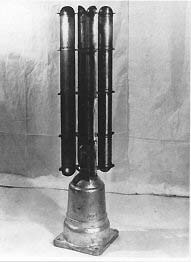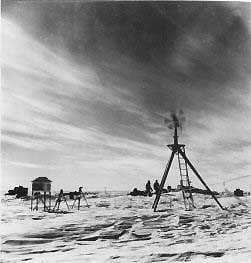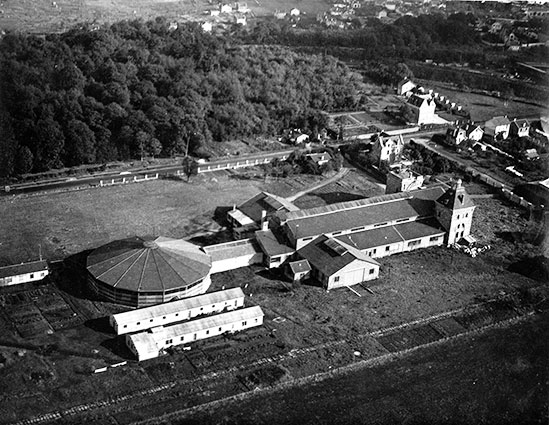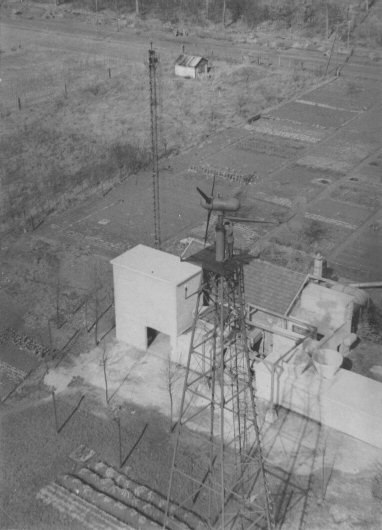1950-1955 : prototypes |
From the end of the forties, Lucien Romani had approached the Institut Aerotechnique (IAT) of Saint-Cyr l'Ecole (Yvelines) where my father worked (aerial view of the site today).
This small wind energy research station had two purposes:
Several models of small wind turbines were tested on metal towers. The last one was the BEST-Romani 10 KVA wind generator. Not only wind turbines were tested here:
The research station was also used to develop measuring gauges coupled with recorders using the Poggendorff method (measurement by opposition). These devices required controls, developments or calibration within the precincts of the research station itself or in the wind tunnel of the close Institut Aerotechnique. On the first of January 1955, my father was recruited by the BEST and his first tasks were to monitor this wind generator and the measuring equipment, which he measured daily. Models derived from the BEST-Romani experimental wind generator (10 KVA) were produced by the Aérowatt company and equipped the Service des Phares et Balises as well as the Paul-Emile Victor weather stations in Terre-Adélie. There is some doubt about the links between BEST and Aérowatt. According to André Argand, Head of the Wind Energy Division at EDF's Direction des Etudes et Recherches, Aérowatt would have been a subsidiary of the Commissariat à l'Energie Atomique and BEST would have had a share in it. However, this claim could not be verified. The fact is that when Aérowatt's wind turbines experienced technical problems, it was often BEST's engineers and technicians who intervened (notably the Sept Iles lighthouse, off Ploumanac'h). The company Aérowatt was bought by Marc Vergnet's Société Vergnet SA which still manufactures and sells wind turbines under this brand. |
 |
General view of the station and its three pylons. During the Second World War, of these two buildings, the one on the left was my father's home. He lived there with his parents. The house was destroyed by an Allied bombing raid in the summer of 1944 without causing any casualties, as my family had taken shelter as soon as the alarm was raised. The vegetable garden and fruit trees planted by Pierre Jean Cavey during and just after the war can also be seen in the centre. My father also kept six beehives there for his account and that of a doctor from Saint-Cyr: Doctor Robert Mouton who gave birth to me. |
 |
In the foreground the dome of the test arena of the Institut Aérotechnique de Saint-Cyr l'Ecole. |
A closer look at the 10 KVA wind generator. |
View of the wind turbine taken from the top of the anemometer tower. The employee is next to the machine. |
 |
| The CDC - Ailleret anemometer. Its characteristic is to measure the theoretical wind energy per square meter (wind energy gauge). Its inventor became Director of Studies and Research at EDF. He played a decisive role in the construction of the Nogent-le-Roi wind turbine. |
 |
CIAMO wind generator of the Sept Iles lighthouse. Diameter 5.73 metres. Nominal power: 5 kW. |
 |
| Real wind energy gauge designed by the company Aérowatt. |
 |
| CIAMO (Compagnie Industrielle des AroMOteurs) wind turbine at the Charcot Station (Terre Adélie) powering a French Polar Expeditions weather station. Photo was taken during the International Geophysique Year (July 1957 - December 1958). |
Last update: Nov-04-2025 23:33:10 CET
![]()
Back to the top of the page



